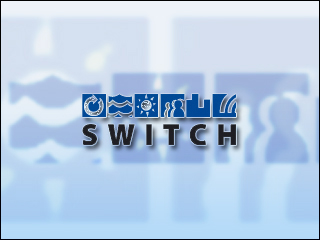UNESCO ~ SWITCH
UNESCO
Project: SWITCH
UNESCO SWITCH is a collaborative project involving 33 partners from Europe, Africa, South America, and Asia. It focuses on 13 global cities. Inhabitants of these cities are brought together with specialists from many fields, including technicians, economists and sociologists. The water situation in the cities is mapped from an integrated perspective by examining six themes: sustainable and integrated urban water management, storm water management, water supply, sanitation and waste management, water environments, and planning and governance. After the water situation has been mapped innovative technological solutions are introduced, demonstrated and implemented.
An example is the city Zaragoza in Spain. Zaragoza is committed to reducing water consumption to 90 litres per person per day by 2010. This is being achieved by targeting water loss management and reducing water consumption. SWITCH demonstrations are aimed at reducing water use and loss from distribution networks as well as showing the potential of an integrated resource planning approach.
city Zaragoza in Spain. Zaragoza is committed to reducing water consumption to 90 litres per person per day by 2010. This is being achieved by targeting water loss management and reducing water consumption. SWITCH demonstrations are aimed at reducing water use and loss from distribution networks as well as showing the potential of an integrated resource planning approach.
Another example is Beijing, China. Beijing is challenging the limits of rainwater collection and use for urban agriculture. The emphasis is on effective use of water through appropriate technologies for capturing and applying water urban fields. The goal is to demonstrate the efficiency, economy and replicability of the methods as well as the opportunities for the market-led peri-urban production of produce.
The SWITCH project came into contact with FP-tools via the University of Wageningen in The Netherlands. UNESCO had an in-house solution, but it was not flexible. A database had to be populated and distributed to the various partners, which caused many problems relating to versions and e-mails. EU-xpert was introduced for the scientific part. The system was set-up with work packages, tasks and deliverables. Each section was provided with an explanatory text. An ID and a password were issued to between 80 and 100 users, who all worked on the same document. Guidelines explaining the system were drafted and sent to the users, and personalised assignments were created. It became clear who did or did not make their contribution when the document was exported to Word. This was an issue WP leaders had to address. The authors had to review the scientific work that had already been carried out when writing the activity report as well as incorporate the planned activities for the next period when writing an updated DOW. The changes that had occurred during each period over the course of many years were highlighted in the submitted reports. The report itself was consistently formatted. EU-fin was introduced for the financial section. The system was set-up at the work package level. The planning was entered into EU-fin, as were the actuals of the first year, because the project had already started. Guidelines explaining the tool were sent to all the partners. Later, it was decided to discuss the use of the tool at the annual meeting. Among the issues that arose was how the planning could be adapted for the forthcoming periods. Furthermore, introducing the concept of ‘adjustments’ in EU-fin prompted questions as to how these should be used. Another question related to the indirect cost method and the indirect cost advice. The A3.1 and A3.2 reports were used from the start of the project, and at a certain point the flexible analyses were introduced in EU-fin. These analyses enable any cross-section of the data to be made, producing data responding to a specific need. These reports proved to be extremely helpful. These reports can be exported to Excel. The FORM-C information was available to the partners and could be used to create the official FORM-Cs. The history of the data is now an area of focus. Exporting the data to Excel and Word freezes the status of the project at that moment in time. This is important for any audits that may be carried out. Service was good. The tools are irreplaceable for a project this size. Less e-mails have to be sent, there is only one version of the data, the oversight of the project is increased, and data or texts can be consulted simultaneously from wherever there is an Internet connection.
